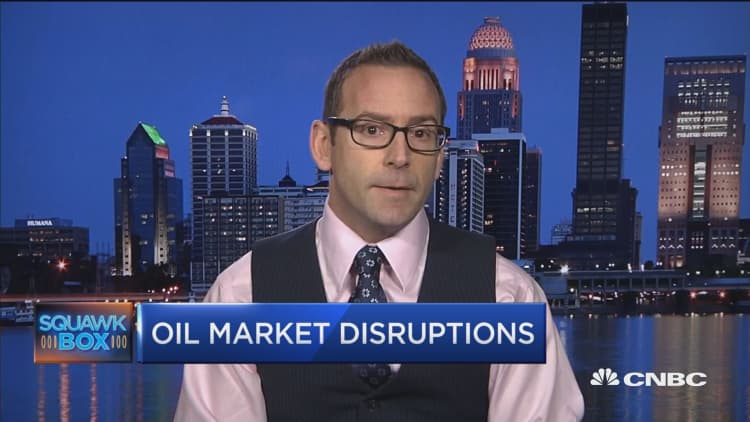Oil prices rose on Thursday, supported by unrest in Iran that has raised concerns about supply risks, a demand boost due to cold weather in the United States and OPEC-led output cuts.
U.S. oil stocks fell more than expected, continuing a steady drawdown of supplies in the world's largest oil consumer, though stocks of distillates and gasoline rose on heavy refining activity driven in part by year-end adjustments.
Anti-government protests since last week in OPEC's third-largest producer have added a geopolitical risk premium to oil prices, although Iran's production and exports have not been affected.
U.S. crude ended Thursday's session up 38 cents at $62.01 a barrel, while Brent crude, the international benchmark, closed 23 cents higher at $68.07.
Both contracts posted their best closing price since December 2014 and touched their highest intraday level since May 2015.

"There is enough support for prices with the cold in the U.S. and the geopolitical factor," said Petromatrix oil analyst Olivier Jakob.
Following six days of demonstrations, the elite Revolutionary Guards Corps said on Wednesday that it had deployed forces to quell unrest in three provinces where most of the trouble had occurred.
Analysts at JBC Energy said the price reaction to the Iranian unrest was overdone.
U.S. commercial crude stockpiles fell by 7.4 million barrels in the week through Dec. 29, the U.S. Energy Information Administration reported. S&P Global Platts had projected that crude in U.S. storage would fall by 5.7 million barrels.
Meanwhile, gasoline inventories rose by 4.8 million barrels and distillate fuel stocks jumped by 8.9 million barrels.
Freezing weather in the United States has spurred short-term demand, especially for heating oil.
Oil prices on Wednesday settled at their highest levels since December 2014. The Organization of the Petroleum Exporting Countries decided against taking measures to support the oil market in November 2014, a move that deepened a price collapse.

OPEC, supported by Russia and other non-members, began to hammer out a deal to cut supplies again in 2016, aiming to lift prices by removing a glut built up in the previous two years.
Their cuts started a year ago and compliance has been high, aided by involuntary output declines in Venezuela, where the economy is collapsing, plus unrest in Nigeria and Libya. Producers have decided to extend the deal until the end of 2018.
OPEC's cuts are helping reduce global inventories.
Byron Wien of Blackstone listed the prospect of U.S. crude topping $80 as one of 10 potential shockers for investors in 2018 in his annual list of surprises.
Balancing the trend towards a tighter market is higher production in the United States, where the OPEC-led effort to push prices up is spurring more shale oil output. Total weekly U.S. production jumped by 28,000 barrels a day to nearly 9.8 million barrels a day, EIA reported on Thursday.
— CNBC's Tom DiChristopher contributed to this report.

